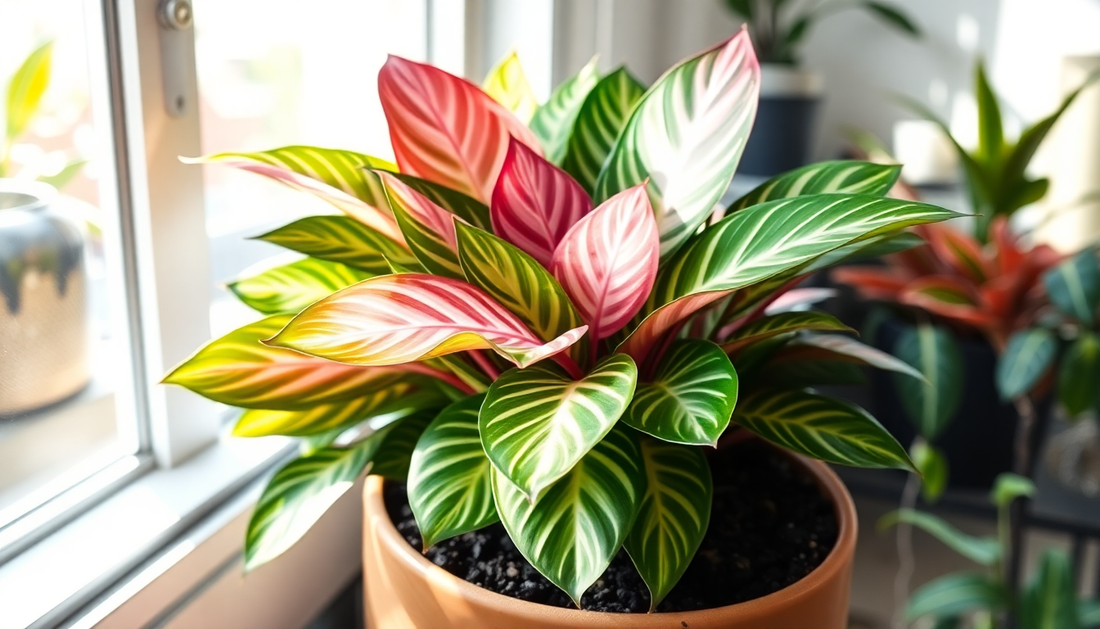
The Best Soil for Growing Aglaonema Indoors
As a plant enthusiast, I've always been fascinated by the Chinese evergreen, also known as the Aglaonema. These stunning foliage plants are not only visually appealing but also relatively easy to care for, making them a popular choice for indoor gardeners. However, one of the most critical factors in successfully growing Aglaonema indoors is the soil they're planted in. In this blog post, I'll share my insights on the best soil for Aglaonema and how to create the perfect growing medium for these beautiful plants.
Understanding the Aglaonema's Soil Needs
Aglaonema, like many tropical plants, thrive in well-draining, nutrient-rich soil that mimics their natural habitat. In the wild, these plants grow in the understory of tropical forests, where the soil is typically moist but not waterlogged, and rich in organic matter. To replicate these conditions indoors, we need to choose a potting mix that provides the right balance of moisture retention, aeration, and nutrient availability.
Drainage and Aeration
One of the most critical factors for Aglaonema's soil is drainage. These plants are susceptible to root rot if the soil remains too wet for too long. To ensure proper drainage, the potting mix should be well-aerated, with a loose, porous structure that allows excess water to easily flow through.
Nutrient Content
Aglaonema also require a nutrient-rich soil to support their growth and development. In their natural habitat, they receive a steady supply of nutrients from the decomposing organic matter in the forest floor. To mimic this, the potting mix should contain a blend of organic materials, such as compost, peat moss, or bark, that can slowly release nutrients over time.
pH Levels
Aglaonema prefer slightly acidic soil, with a pH range of 5.5 to 6.5. This pH range helps the plants absorb essential nutrients more efficiently and supports the growth of beneficial microorganisms in the soil.
The Best Soil Mix for Aglaonema
Based on the Aglaonema's soil requirements, the ideal potting mix for these plants should have the following characteristics:
Well-Draining Potting Mix
A high-quality, well-draining potting mix is the foundation for successful Aglaonema cultivation. Look for a mix that contains a blend of ingredients like perlite, vermiculite, or bark to improve aeration and drainage.
Organic Compost Blend
Incorporate a generous amount of organic compost or aged bark into the potting mix to provide a steady supply of nutrients. This will help to mimic the nutrient-rich conditions of the Aglaonema's natural habitat.
Aerated Soil Structure
To ensure the soil is well-aerated, you can add additional perlite, orchid bark, or even small pieces of charcoal to the mix. This will help to create tiny air pockets that allow oxygen to reach the plant's roots.
Slightly Acidic pH
If your potting mix is not naturally acidic, you can adjust the pH by adding a small amount of sulfur or peat moss to the blend. This will help to create the ideal growing conditions for your Aglaonema.
Preparing the Soil for Planting
Once you've assembled the perfect soil mix for your Aglaonema, it's time to prepare the soil for planting. Start by thoroughly mixing all the components together in a large container or on a clean surface. Ensure that the ingredients are evenly distributed throughout the mix.
Next, moisten the soil with water, but be careful not to oversaturate it. The soil should be damp but not sopping wet. This will help the soil settle and allow the organic matter to begin breaking down.
Finally, fill your Aglaonema's planting container with the prepared soil mix, leaving enough space at the top to accommodate the plant's root ball. Gently firm the soil around the plant to ensure good soil-to-root contact, but avoid compacting it too tightly.
Ongoing Soil Maintenance
To keep your Aglaonema thriving, it's essential to maintain the soil's optimal conditions. Here are some tips for ongoing soil care:
Monitoring Moisture Levels
Check the soil regularly and water your Aglaonema when the top inch or two of the soil becomes dry. Avoid letting the soil become completely dry or waterlogged, as either extreme can be detrimental to the plant's health.
Replenishing Nutrients
Over time, the organic matter in the soil will break down, depleting the available nutrients. To keep your Aglaonema well-fed, consider topping up the soil with a slow-release organic fertilizer or compost every few months.
Adjusting pH as Needed
Periodically test the soil's pH and make adjustments as necessary to maintain the slightly acidic conditions that Aglaonema prefer. You can use a soil pH test kit or consult with a local nursery or extension service for guidance.
By following these guidelines and creating the perfect soil environment, you'll be well on your way to growing healthy, vibrant Aglaonema plants that will thrive in your indoor garden. Happy planting!
Conclusion
Choosing the right soil is crucial for the successful cultivation of Aglaonema indoors. By understanding the plant's soil requirements and creating a well-draining, nutrient-rich, and slightly acidic potting mix, you can provide your Aglaonema with the ideal growing conditions. Remember to monitor the soil's moisture levels, replenish nutrients, and adjust the pH as needed to ensure your Aglaonema continues to flourish. With the right soil and care, these beautiful foliage plants can bring a touch of tropical elegance to any indoor space.







No comments